The Most Powerful Technique for High-Stakes Negotiations
5 Reasons To Use This Overlooked Yet Powerful Negotiation Technique
Author: Joshua Seedman
Intro
Multiple Equivalent Simultaneous Offers (MESOs)
Exhibit 1 (Click to Enlarge)
Multiple Equipment Simultaneous Offers (MESOs) is one of the most powerful negotiation tactics because it is a covert information gatherer that leverages human choice, flexibility, interest based framing, and anchoring (See Exhibit 1). MESOs equates to presenting multiple “package deals” at the negotiation table and is seen as an excellent (1) indirect information gatherer, (2) conversation tool, and (3) storytelling platform. MESO’s is performed by simultaneously offering three package options that are of the same value to the proposer. This is in stark contrast to the typical single-issue negotiation tactic in which one side presents only one package offer and the bargaining standoff begins with little optionality to aid in the process. This old-school style is analogous to an arm-wrestling match or tug-of-war. One side wins and the other loses. In the process, value erosion and/or relationships are tarnished. The success experienced by those employing MESOs is rooted in the notion that individuals highly value choice and strongly prefer having multiple options rather than a single option.[1]
5 Reasons to Use Mesos
Reason #1: Tug-of-War Mitigator
Allows for Integrative vs. Distributive Negotiations
Exhibit 2 (Click to Enlarge)
Negotiations are often portrayed as a dance between the two sides, in which one side makes an offer, the other side responds, and so on. This “tug-of-war” mentality is called distributive negotiations and is value erosive (See Exhibit 2). Distributive negotiations are generally value erosive as this negotiation methodology (1) consists of generally one issue (usually price) which is poor on relationships, (2) promotes a mentality of dividing the current pie versus enlarging the pie, and (3) creates leverage loss (e.g., if you lose one issue any leverage associated with that element disappears). Integrative (i.e., negotiating at the package level), on the other hand, involves multiple issues which creates a more collaborative environment as both sides can more easily get what they want. Consequently, integrative (1) enlarges the pie by increasing the available benefits to each side, (2) allows concessions which helps mitigate emotion escalation, and (3) increases leverage as everything is settled in a package instead of an issue by issue/tug-of-war. Quite simply, MESO’s provides a surefire methodology of turning a negotiation from distributive into integrative.
Reason #2: Covert Information Gatherer
Information Is Power and MESO’s Allows One to Transition from Guessing to Leading
One of the main objectives of leading with several offers is to gather information because information about one’s opponent is the greatest form of power. Indeed, MESOs are an indirect and undercover way to gather information while also telling a compelling story that highlights your opponent’s interests. By leveraging MESOs you not only appear more flexible but you also collect vital information about the other side’s preferences based on which option and/or sub-points they like best – a strategy that ultimately increases the odds of reaching an agreement.[2] As Victoria Medvec and Adam Galinsky remark, “MESOs can allow a negotiator to play detective and gain critical information from the other side that will lead to more optimal solutions . . . [and] MESOs can be used to uncover much more information than a negotiator would ever reveal through answers to questions.”[3]
REASON #3: Concession Generator
Creates an Illusion that Your Opponent is Winning
In any negotiation, you want to give the appearance of constantly conceding because only when you concede does the other side feel they are truly winning. As such, this is a game of walking a tightrope – a balancing act between leaving enough room to concede and anchoring with an ambitious offer that does not appear too wildly ambitious. And, not surprisingly, the best way to walk the negotiation tightrope is to offer not only one but rather three options (i.e., MESOs) with each option set above one’s negotiation goal ultimately leaving that much needed concession room. In addition, one should fractionate each issue, thereby creating many sub-issues under each option to negotiate on. When choosing sub-issues, it’s important to remember not to only choose elements that are important to you but also to your opponent. This methodology leaves many areas to concede on all while strategically letting the other side believe they are winning.
Reason #4: Covert Offense Creator
Leverages Biases Against Your Opponent
Exhibit 3 (Click to Enlarge)
Exhibit 4 (Click to Enlarge)
MESO’s allows one to leverage biases against one's opponent. For example, MESO’s makes it possible to aggressively anchor while at the same time signaling flexibility. This covert anchoring process works because the entire process is being framed through the lens of choice. Anchoring or the idea of grounding your opponent to an initial value (e.g., giving the first offer), can lead to improper adjustments and major implications for who captures most of the bargaining zone (See Exhibits 3 and 4). Studies at MIT found that anchoring can produce a ~43% swing in revenues. As Adam Galinsky found, “[i]n situations of great ambiguity and uncertainty, first offers have a strong anchoring effect — they exert a strong pull throughout the rest of the negotiation . . . [and] [e]ven when people know that a particular anchor should not influence their judgments, they are often incapable of resisting its influence.”[4] However, anchoring can be nullified either by (1) savvy negotiators that are cognizant of such devices or (2) parties that are so outraged by the aggressive offer that a negative tone permeates the entire negotiation. MESOs, however, mitigates both of these concerns by allowing the negotiator to be aggressive in the “anchoring” process because flexibility (i.e., a cooperative spirit) has already been established by providing several options and key information on the other side’s priorities has been gathered allowing for interest based framing.
Reason #5: Value Optimizer
MESOs improves settlement rates & increases the likelihood of a Pareto Optimal Outcome
Exhibit 5 (Click to Enlarge)
Until recently, the notion of MESOs was unconfirmed but Northwestern Professor Victoria Medvec and Columbia Professor Adam Galinsky empirically proved that MESOs truly creates several key benefits. Simply, Medvec and Galinsky performed four experiments on MESOs and found the following: (1) respondents receiving multiple offers were more likely to accept an offer and were generally more satisfied with the offer than respondents receiving a single offer of the same value, (2) negotiators who made MESOs achieved better distributive outcomes and were perceived as being more flexible, (3) more efficient outcomes were reached, and (4) agreements were more likely to be made in a negotiation or dispute.[5] Quite simply, through the above studies and additional research and client work of PNI Consulting, we’ve seen the following impactful results:
- Participants receiving MESOs were ~55 percent more likely to accept the offer (See Exhibit 5)
- Those who employed MESOs were ~78 percent more likely to reach a settlement (See Exhibit 5)
- Participants who exchanged MESOs were ~96 percent more likely to reach a Pareto optimal outcome (See Exhibit 5)
Client Example
One of my clients (annual revenues exceeding $25B) had just undergone a significant merger. During the integration they were at a standstill on the best path forward. A big portion of this challenge stemmed from a Steering Committee (SteerCo) that consisted of operators from each business unit who were all concerned about looking poorly. They also didn’t want to give away autonomy let alone have rules dictated by a company that just acquired them. This was a typical example of human pushback (i.e., battle of the wills) and because of this pushback the SteerCo would not give a green light on the proposed plan being offered by the CEO and the executive team.
This value erosive battle had gone on for several months. Thus, I was brought in to help push pass this barrier. I immediately recommended presenting MESOs. My rationale to the CEO was that there are sometimes multiple ways to get to your end goal but because you’re only offering one option you’re looking inflexible. I worked with the executive team in crafting the most interest-based MESOs options that would still allow the executive team to arrive to their end goal for the organization (no matter which of the three options were chosen). Upon presenting these three options to the SteerCo they were able to finally come to an agreement. What had been stalled for months, MESOs solved in less than two weeks. Interestingly, over 85 percent of the SteerCo voted on Option 1 – the very option they had been giving pushback on for months, illustrating the power MESOs brings in (1) mitigating human pushback and biases, (2) illustrating flexibility, and (3) optimizing the chance of an agreement.
How to Implement
Exhibit 6 (Click to Enlarge)
A negotiator needs their offer to be focused on their opponent and their interests (i.e., make the target think that every offer is all about them). This is accomplished by presenting three initial proposals (i.e., “options) that across the package of issues have the same total value, although the value of each individual issue may vary.[6] Simply, in order to be most effective, one should ensure that each MESO option is weighted equally and not present a good, better, best option. The following provide the best steps in utilizing MESOs (See Exhibit 6).
- Fractionate Issues: Ensure each issue to be negotiated on is split (i.e., fractionated) into as many sub-issues as possible to ensure many items to concede on. This strategy ensures you subconsciously allow the opposing side to feel they’re winning the negotiation.
- Assemble Three Equally Weighted Options: Transform fractionated issues into three equally weighted MESOs (not a good, better, best option).
- Keep Issues Important to You Constant: Change issues that are important to the opposing side and hold constant issues that are important to you.
- Create Aggressive Offers That Will Not Be Initially Accepted: Ensure your first options (A,B,C) are not accepted but rather maximize value by creating options that allow plenty of room for pushback and concessions.
- Frame MESOs in an Interest Based Format: Create a storyline and rationale for why these package options are best for the opponent.
- Leverage Insights: Use gathered insights to create a new set of options and repeat the above five steps until an agreement is reached.
Hypothetical Example
A very basic MESO hypothetical follows. One might be negotiating with a potential employee who perhaps is expressing how important vacation time is in their decision process. To test that theory one could start the negotiations by giving three equal but different options such as the following: (1) $100,000 base salary per year with a $25,000 sign-on bonus, 2 weeks paid vacation per year, and no healthcare coverage, (2) $90,000 base salary per year with a $30,000 sign-on bonus, 3 weeks paid vacation per year and full healthcare coverage, or (3) $75,000 base salary per year with a $35,000 sign-on bonus, 4 weeks paid vacation per year, and minimal healthcare coverage.
One could present the following three options by highlighting that the corporation highly values the employee’s freedom and thus wants to ensure several excellent options are given that would allow the employee to spend that much needed paid time away from the office. The following interest based story and three MESO options will no doubt solicit valuable information whether vacation time is truly the driving factor of this negotiation or if in fact it is salary, sign-on bonus, and/or insurance coverage. Once the negotiator uncovers what is truly driving the other side’s decision making process the options can be refined into a new set of three options that more caters to the real decision-making drivers. This expedites the negotiation process and allows the negotiator to be collaboratively aggressive while also being able to play detective by gathering vital information about the other side. This coupled with the perception of flexibility and concession creates a powerful force that allows the canter of the negotiation to move forward unimpeded.
Conclusion
MESOs is a tremendously powerful negotiation tool and one that is often overlooked in the corporate arena. Thus, any company that chooses to fully utilize this technique will be ahead of the competition. Quite simply, MESOs gives any negotiator a broad storytelling and information gathering canvas that in turn is perfectly compatible with almost every culture and negotiation scenario. When a negotiator presents MESOs, the other side’s reactions often informs you of their priorities and hidden goals. Consequently you can then "craft an agreement that accounts for everyone’s most important interests . . . [while giving] the choice they desire without sending them into decision paralysis.”[7] As such, one can look at single-issue negotiations as a presentation tool while MESOs, on the other hand, as a conversation tool. The only true downside to MESOs is that it requires careful attention to detail and thoughtful preparation. However, for those willing to make such a sacrifice the value unlocking capabilities will be well worth the effort.
About the Author
Joshua Seedman is the founder and chairman of PNI Consulting, a management consulting firm that specializes in global transformations. He has over 20 years of operating and general management experience with expertise in organizational transformations, customer experience, employee engagement, digital transformations, sales & marketing, operational turnarounds, culture/change management, and high-stakes negotiations. His experience includes executive roles within F500 companies, top-tier consulting leadership (McKinsey & Company), over 10 years of global P&L responsibility, and corporate lawyer (Davis Polk & Wardwell). He received his MBA from Kellogg School of Management and his J.D. (cum laude) from Northwestern University School of Law.
Client Results
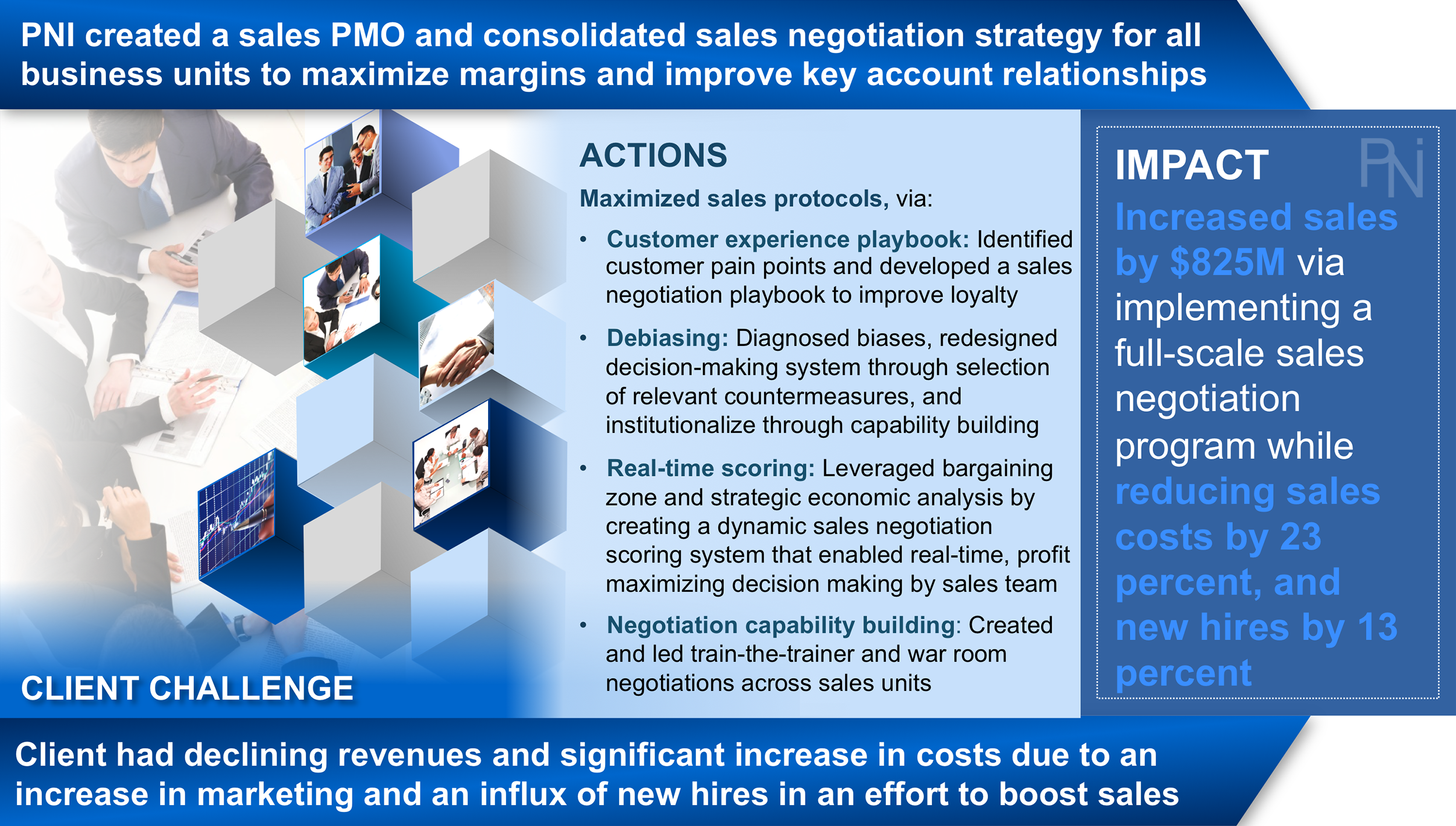
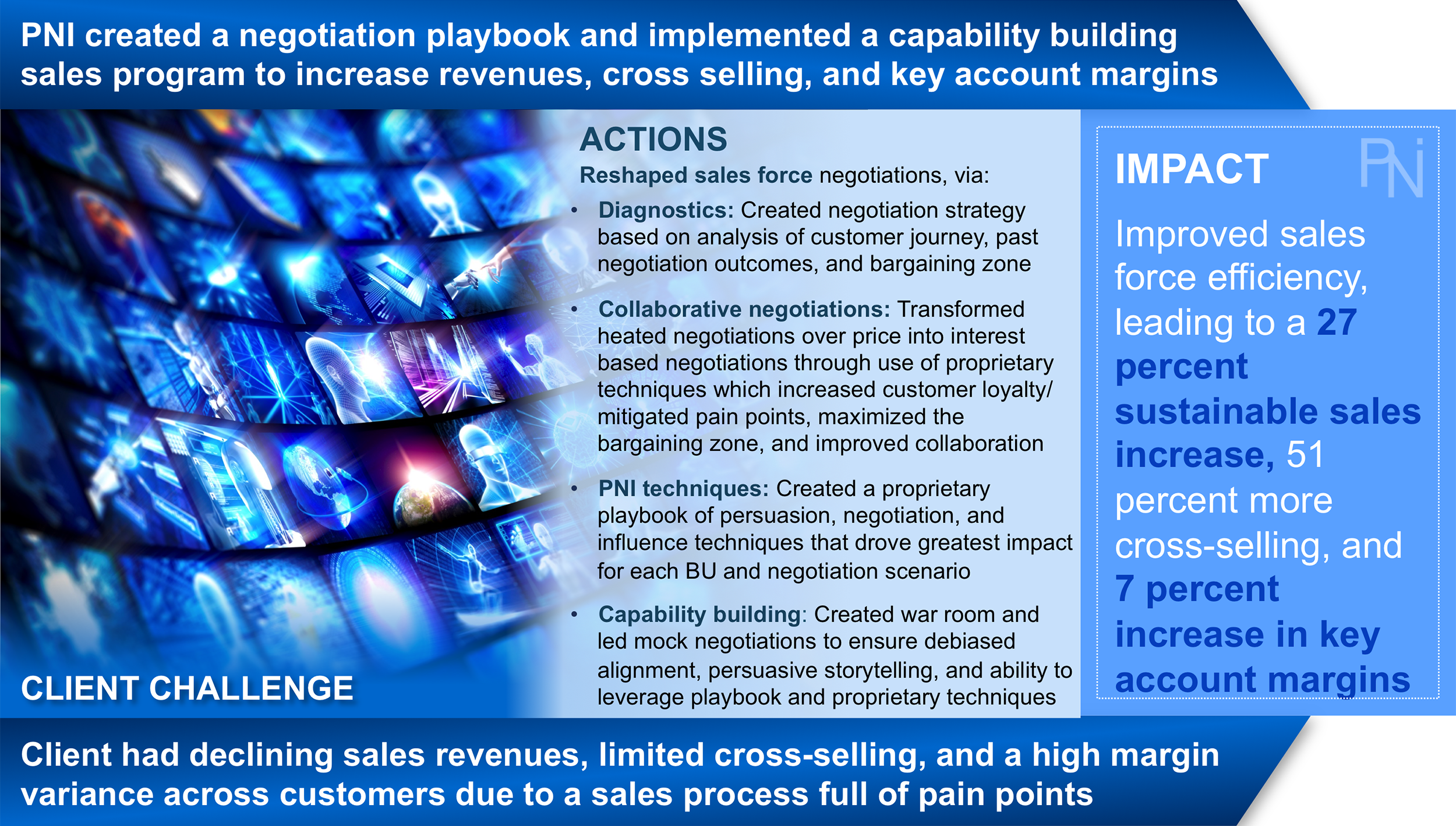

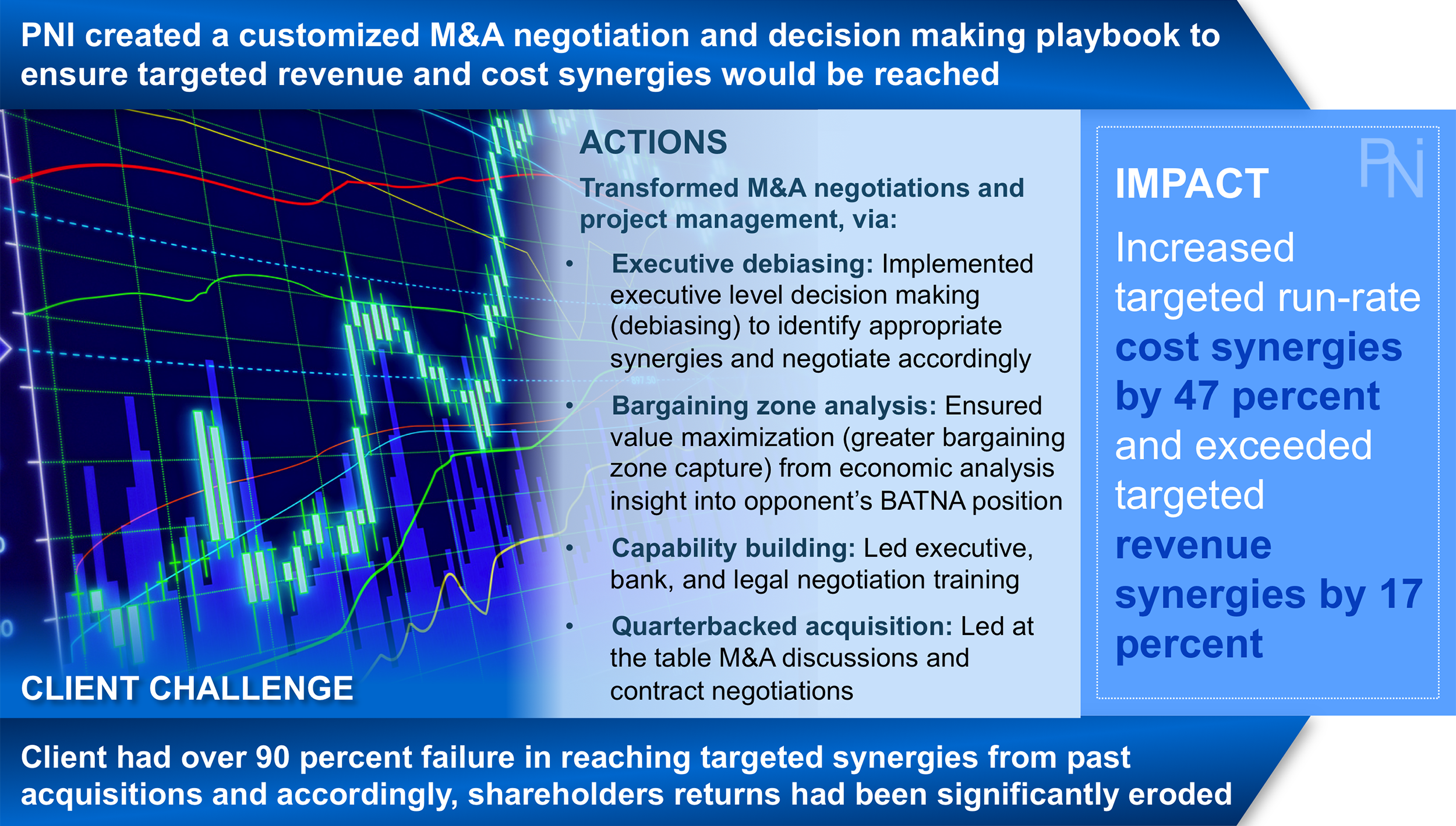
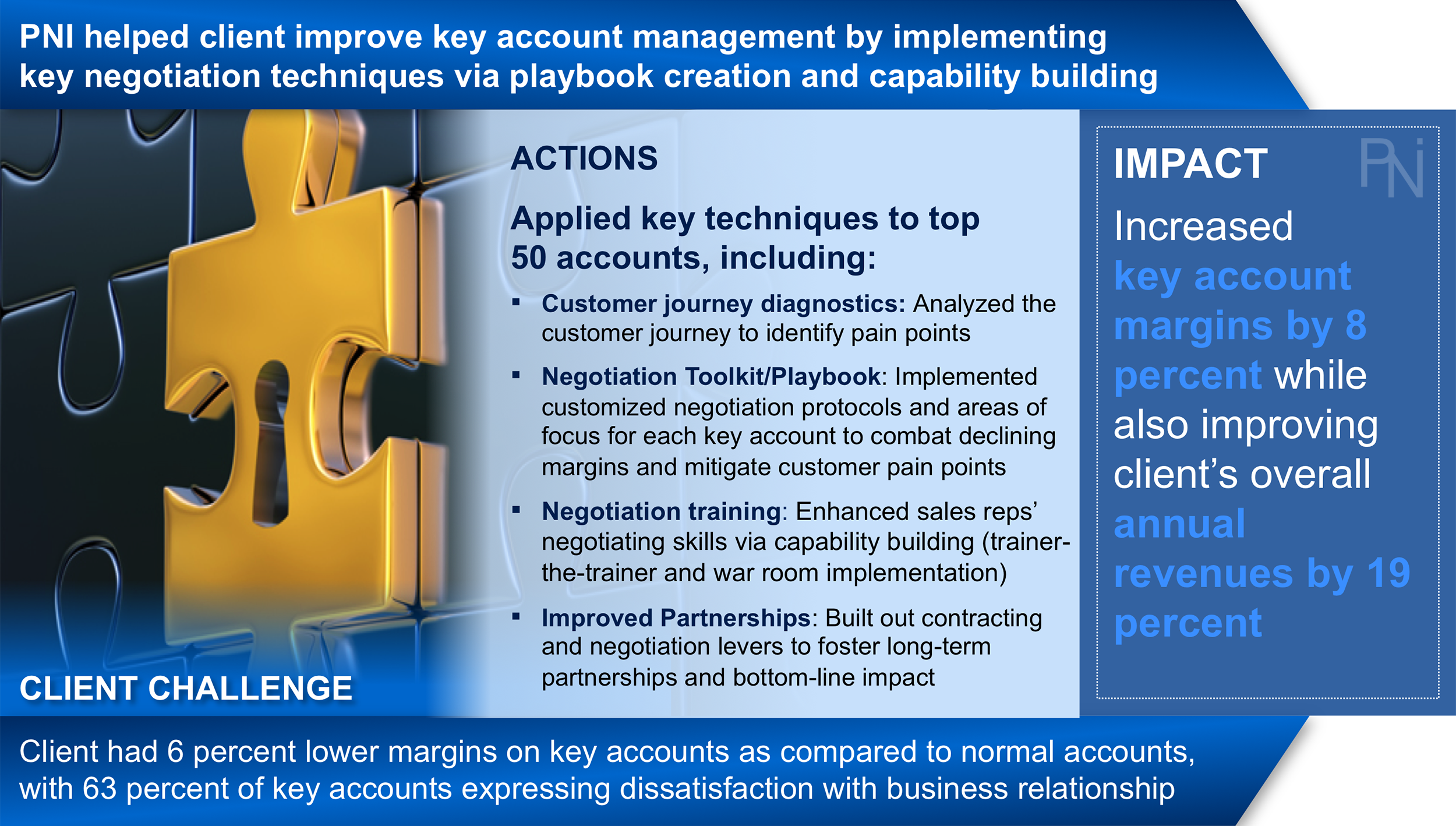
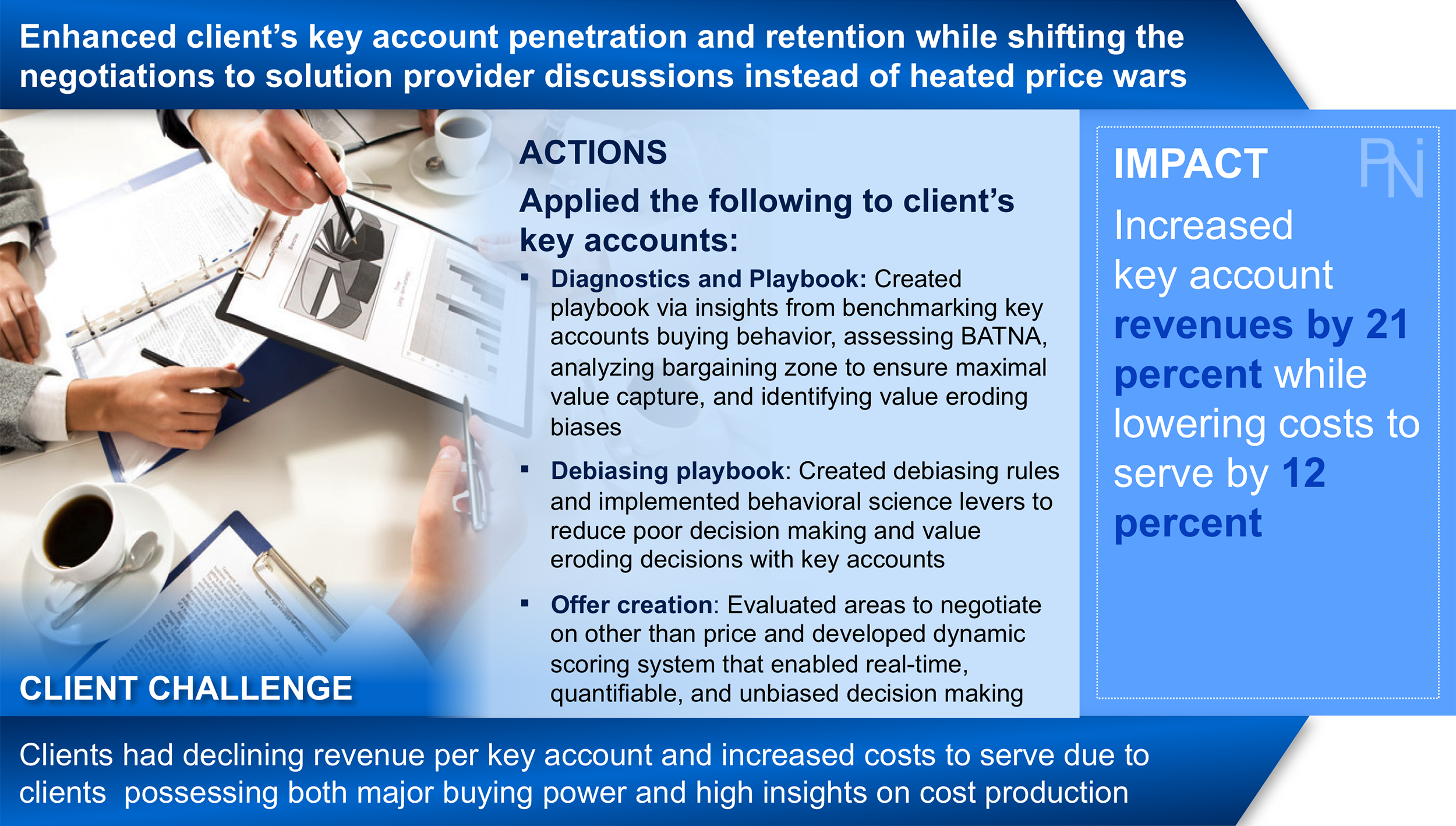
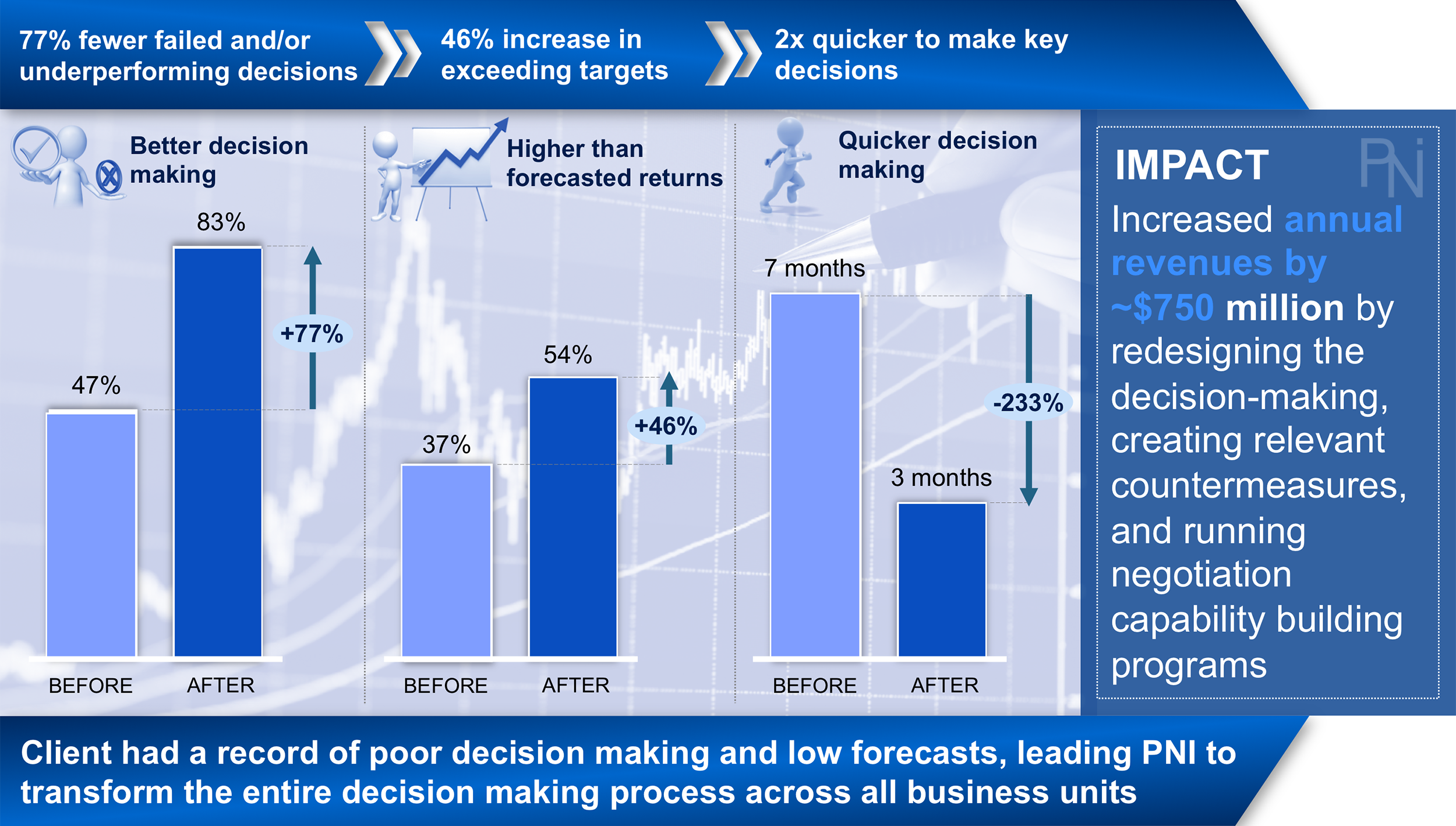
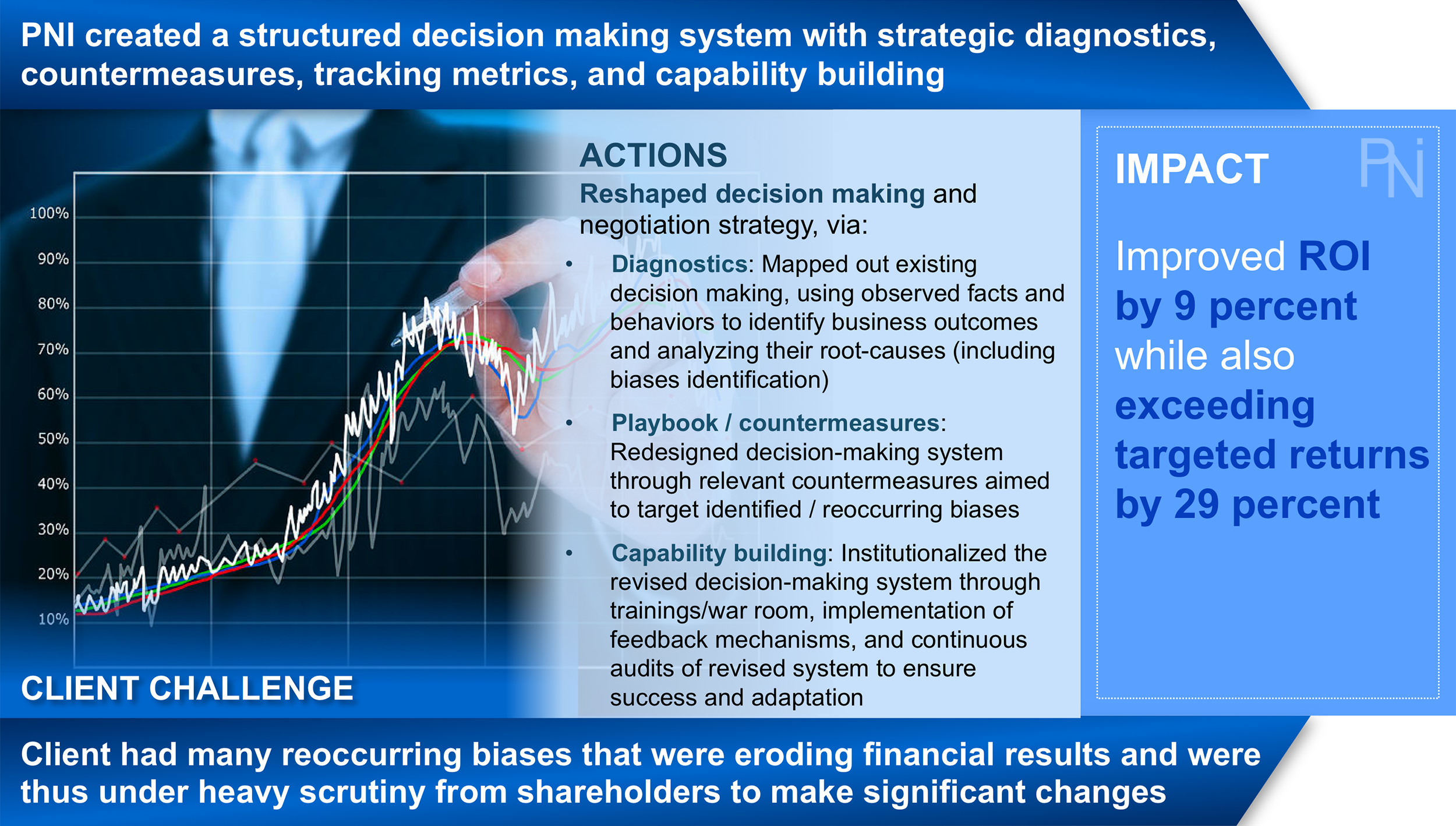
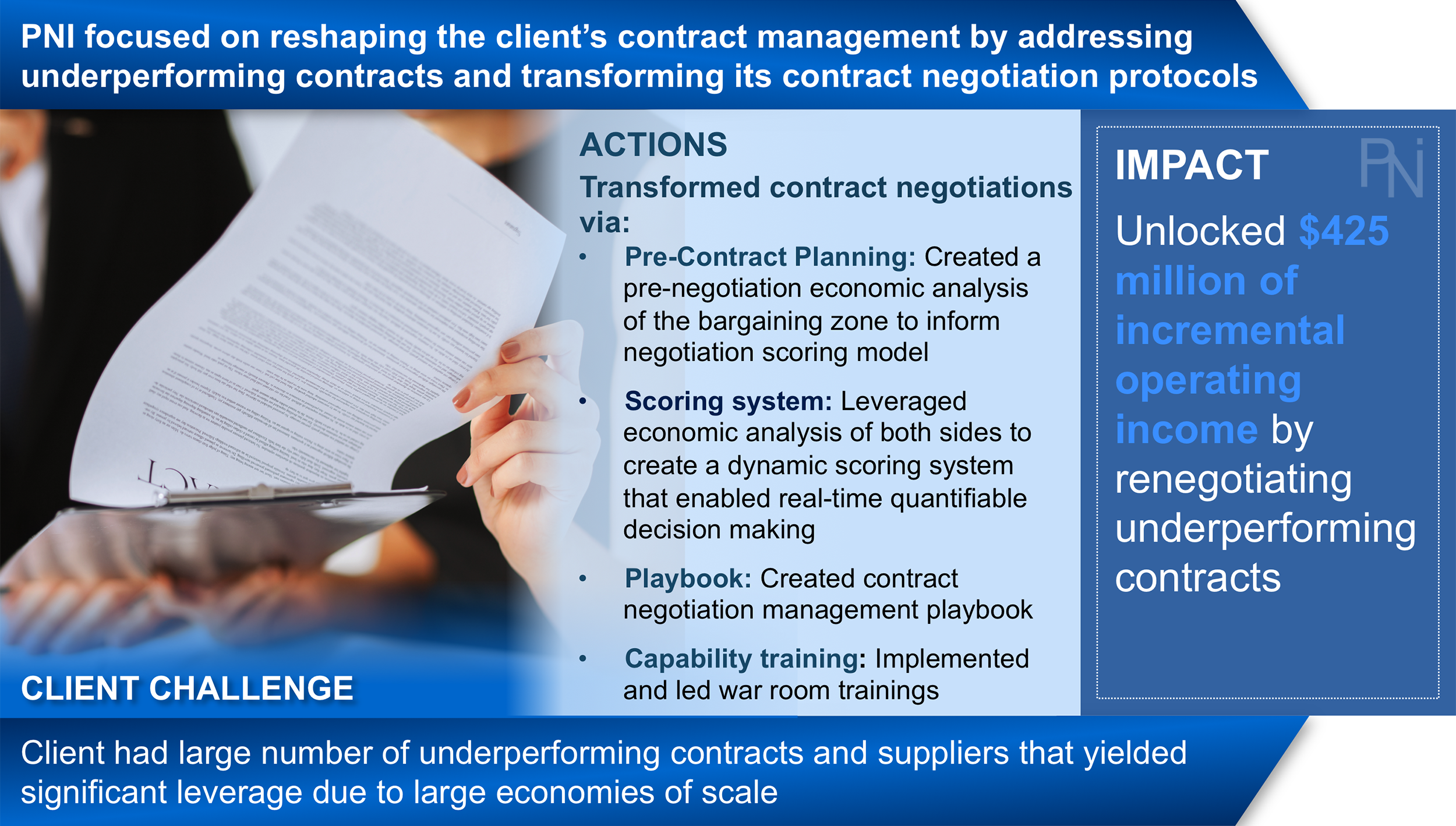
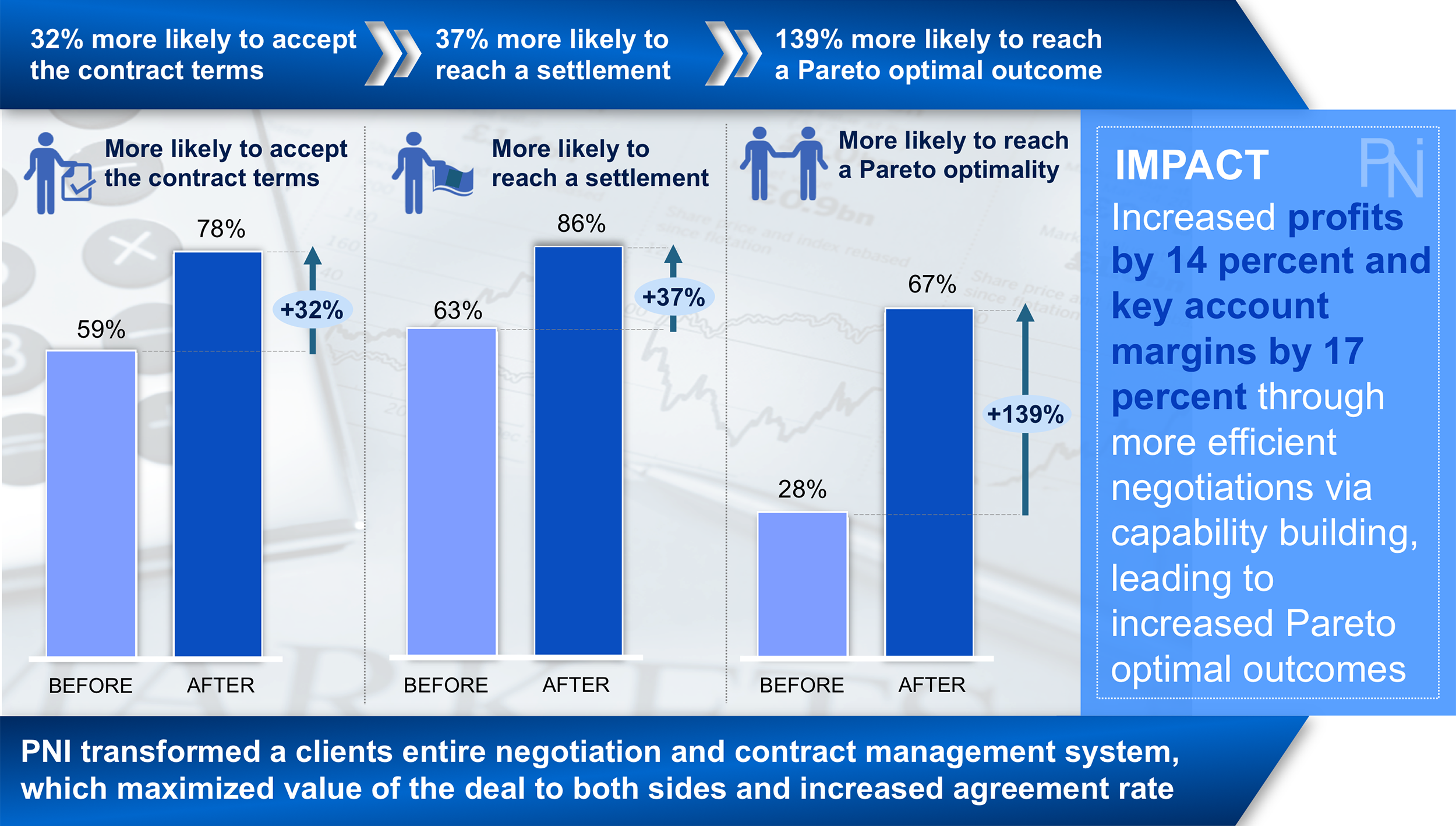
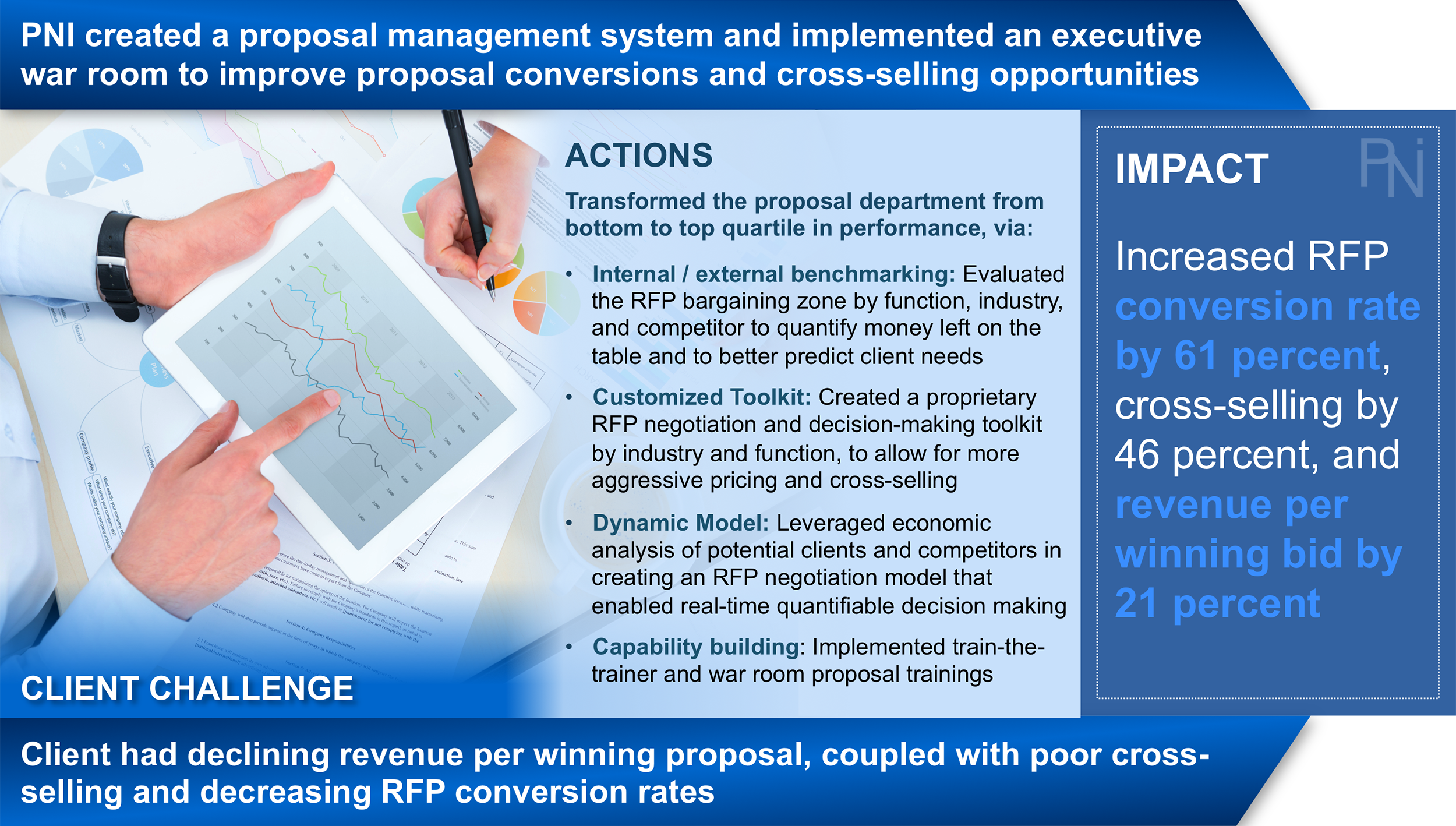
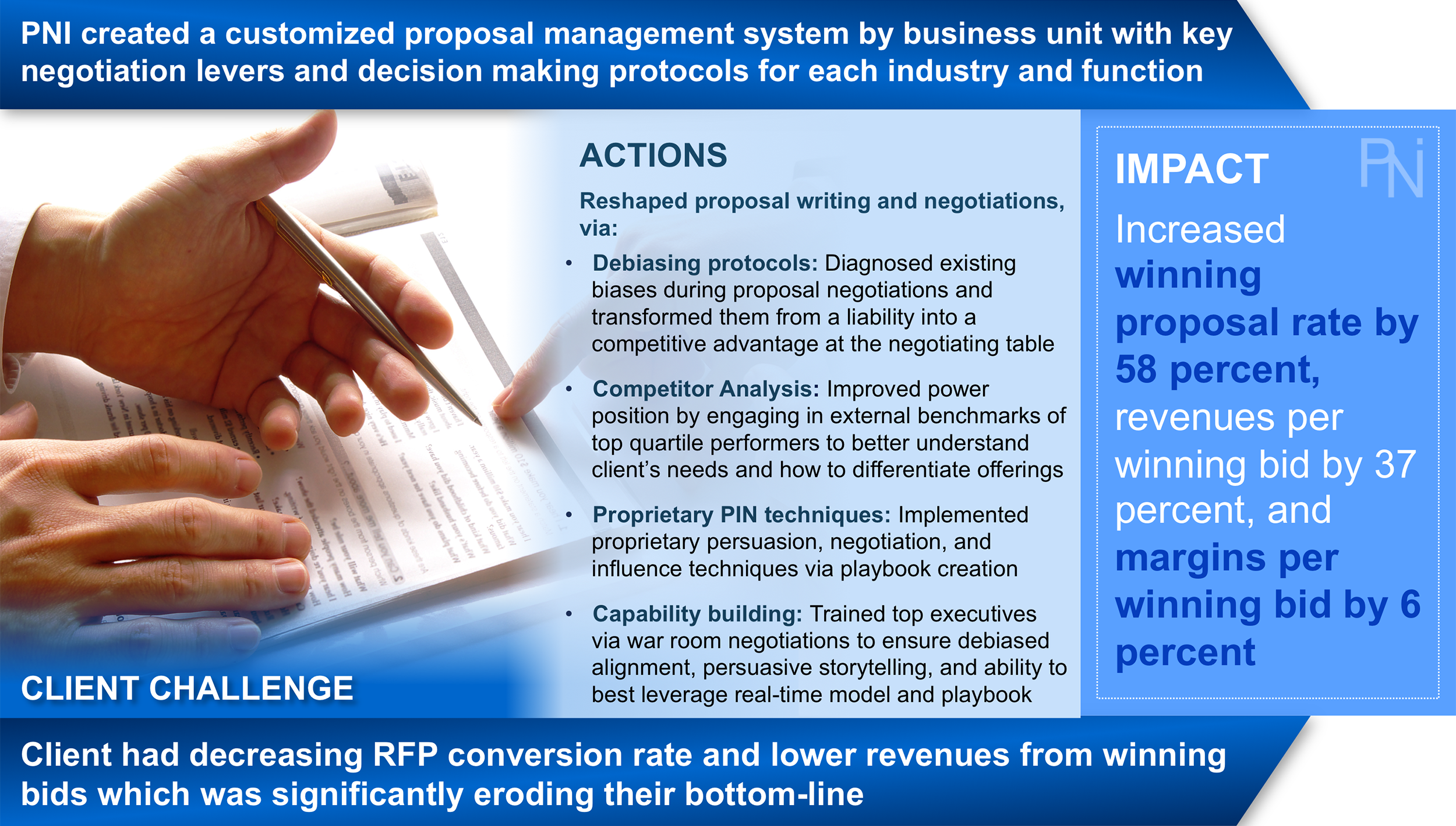


References
- S.S. Iyengar and M.R. Lepper, When Choice Is Demotivating: Can One Desire Too Much of a Good Thing?, Journal of Personality & Social Psychology, Vol 79(6), 995-1006 (2000).
- The Harvard PON Staff, The Benefits of Multiple Offers, Program On Negotiation at Harvard Law School (2010).
- Victoria Husted Medvec, Geoffrey J. Leonardelli, Adam D. Galinsky, and Aletha Claussen-Schulz, Choice and Achievement at the Bargaining Table: The Distributive, Integrative, and Interpersonal Advantages of Making Multiple Equivalent Simultaneous Offers (2005).
- Adam D. Galinsky, Should You Make the First Offer?, Negotiation, 7, 1-4 (2004).
- Victoria Husted Medvec, Geoffrey J. Leonardelli, Adam D. Galinsky, and Aletha Claussen-Schulz, Choice and Achievement at the Bargaining Table: The Distributive, Integrative, and Interpersonal Advantages of Making Multiple Equivalent Simultaneous Offers (2005).
- Id.
- The Harvard PON Staff, The Value of Making Several Offers in Business Negotiations, Program On Negotiation at Harvard Law School (2008).








